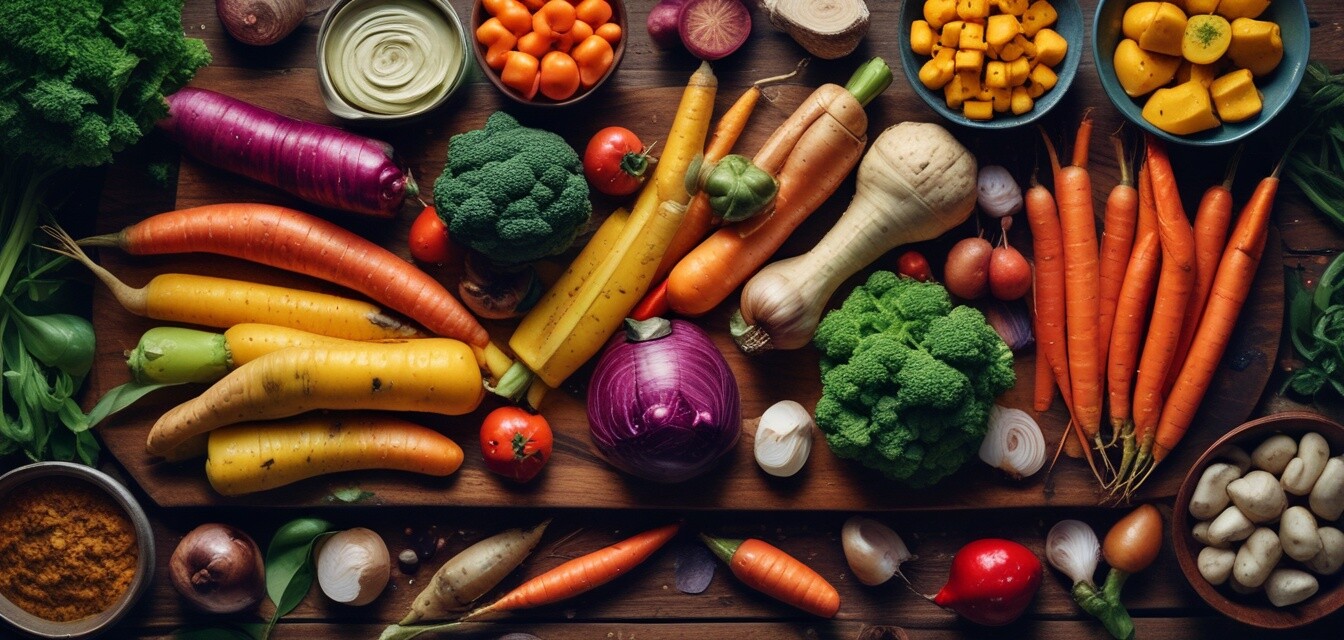
Mastering the Art of Roasting Vegetables
Key Takeaways
- Roasting enhances the natural sweetness and flavor of vegetables.
- Choosing the right season and type of vegetable is essential for the best results.
- Proper technique and timing are crucial to achieve a perfectly roasted outcome.
- Experimenting with herbs and spices can elevate your dish significantly.
- Roasted vegetables can be used in a variety of dishes or enjoyed on their own.
Roasting vegetables is a simple yet effective way to bring out their natural flavors and create a delicious, satisfying dish. From sweet potatoes to Brussels sprouts, mastering the art of roasting will not only enhance your culinary skills but also elevate your meals.
Choosing the Right Vegetables
Before diving into the roasting process, it's crucial to select the right vegetables. Here’s a list of ideal contenders for roasting:
- Root vegetables (carrots, sweet potatoes, beets)
- Cruciferous vegetables (broccoli, cauliflower, Brussels sprouts)
- Soft vegetables (zucchini, bell peppers, asparagus)
- Alliums (onions, garlic)
Seasonal Considerations
Using seasonal vegetables can significantly enhance the flavor and nutritional value of your dish. Here’s a quick reference for seasonal vegetable options:
| Season | Vegetables |
|---|---|
| Spring | Asparagus, Peas, Radishes |
| Summer | Tomatoes, Zucchini, Bell Peppers |
| Fall | Squash, Brussels Sprouts, Sweet Potatoes |
| Winter | Root Vegetables, Cabbage, Kale |
Preparation Techniques for Roasting
Preparation is key to achieving perfectly roasted vegetables. Here’s a step-by-step guide:
- Wash and Cut: Clean the vegetables thoroughly and cut them into uniform pieces. This ensures even cooking.
- Season: Toss the chopped vegetables with olive oil, salt, and pepper. Feel free to experiment with additional spices like paprika, garlic powder, or herbs such as rosemary and thyme.
- Preheat the Oven: Preheat your oven to a temperature between 400°F and 450°F. This high heat will help caramelize the vegetables and develop a crispy texture.
- Use a Baking Sheet: Spread the vegetables evenly on a baking sheet, ensuring they are not overcrowded. This allows for proper air circulation and prevents steaming.
- Toss Midway: Halfway through the cooking time, give the vegetables a toss to ensure even browning.
Roasting Times
The cooking time for roasting can vary based on the vegetable used. Here’s a convenient reference chart:
| Vegetable | Cooking Time (Minutes) | Notes |
|---|---|---|
| Carrots (cut into chunks) | 25-30 | Better caramelization when cut small |
| Brussels Sprouts (halved) | 20-25 | Cut side down for best browning |
| Sweet Potatoes (cubed) | 30-35 | Use a light coat of oil for crispiness |
| Zucchini (sliced) | 15-20 | Watch closely to avoid mushiness |
Flavor Combinations to Try
Don’t hesitate to get creative with your seasoning! Here are some popular flavor combinations:
- Herb-Infused: Rosemary, thyme, and oregano
- Spicy: Chili flakes, roasted garlic, lemon zest
- Sweet & Savory: Honey, balsamic vinegar, and cinnamon
- Umami Boost: Soy sauce, sesame oil, and ginger
Serving Suggestions
Roasted vegetables can be enjoyed in various ways. Here are some serving suggestions:
- As a side dish with your main meal
- In a salad with a drizzle of vinaigrette
- In wraps or sandwiches for added texture
- As a topping for grain bowls or pasta
Conclusion
Mastering the art of roasting vegetables not only enhances their taste but also adds a nutritious element to your meals. With the right techniques and a dash of creativity, you can impress your family and friends with delicious, roasted delights. Don't forget to explore our other resources such as buying guides for kitchen essentials and tips on culinary trends to keep your cooking skills fresh!
Pros
- Enhances natural flavors
- Easy and versatile cooking method
- Allows for creativity with herbs and spices
- Healthy and nutritious
Cons
- Can be time-consuming for large batches
- Requires attention to avoid burning
Tips for Beginners
- Start with one type of vegetable to master the technique before mixing.
- Overcrowding the pan can lead to steaming instead of roasting.
- Use parchment paper for easy clean-up.
- Experiment with different temperatures for varying textures.